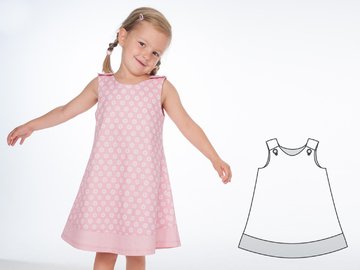Log Cabin Block: Modernity and tradition
The Log Cabin Block with its countless variations is a very popular pattern. This pattern has a very long, traditional past, the basic story of which has been handed down to this day.
Despite or perhaps because of this long tradition, this pattern has managed to become very popular in a modern guise in recent years. This is probably also because its stripes make it very easy to cut and sew.
The effect of this pattern is largely due to the choice of fabrics, or more precisely the colors and the fabric design with its many possibilities. An incredibly different effect is also created by the way the stripes are arranged within the block.
Last but not least, there are, if not countless, then many different ways of arranging the individual sewn blocks into a quilt and sewing them together.
Now you know why I am so fascinated by this block, even though I have sewn much more difficult, complicated and elaborate patterns.
Log Cabin: Loving the simple things in life
But the Log Cabin block is the "back to the roots" block in the flesh, which always brings me back to patchwork reality and teaches me to love and appreciate the simple things in life.
You see, in every hour of handwork with patchwork and quilting there is always a bit of life philosophy, mindfulness and slow living...
Plaid paper is ingenious
The easiest way to draw the log cabin block is with checkered paper. This can be a page from an old notebook or a sheet from a notepad.
If you don't have a ruler to hand, you can simply trace the checks with a pen, which is perfectly adequate and fine.
There are also countless sites on the internet where you can print out checkered paper in the desired size of the individual squares. I find these sites brilliant because many offer the different sizes in both inches and centimeters.
For the following photos, I chose plaid paper in the size of 1 centimeter per square. This is also the size in which I want to sew my log cabin block later.
With the drawing in the original scale, I can better estimate the effect of the block. Of course, I could also draw several blocks and put them together to form a quilt as a trial.
The right scale for your project and your motivation
These Log Cabin blocks at this scale are of course very small. If you want to sew a quilt on this scale, for example, you will need a lot of motivation and stamina 😉.
I would like to make these blocks into a quilt for a dress-up doll. Dressing doll is a silly, awkward name, but I'm sure you know which doll I mean. The blonde, who is surrounded by lots of pink and is actually available from other manufacturers these days with more realistic body shapes. 😉
By the way, you can't just use the name of this doll, because trademark law officially has something against it... That's why I'm sticking with the term "dress-up doll". But I'm getting too far ahead of myself again. For now, let's draw the log cabin block.
The structure of our log cabin
Don't worry, you're not about to read a treatise on the many different ways in which a log cabin block can be constructed.
In the following, I will limit myself to our Log Cabin block, I would be happy if you would like to draw and sew it with me.
Our log cabin block consists of a small square in the middle. The stripes are drawn around this center in complete rounds. You are free to choose whether these rounds run clockwise or counterclockwise.
You can also freely choose the size of the center square and the width of the stripes. I have chosen the square in the size 1x1 centimeter. The strips also have a height of one centimeter, but as I said, you can choose anything you like.
In terms of structure, that's all there is to it. The variety comes from the different arrangement of the stripes and the color distribution within the block.
You can see what I mean in the following photo series.
Have fun drawing along!

You simply start with a square in the middle of your block. My square is one centimeter in size.
Incidentally, in traditional log cabin blocks, this square is made of red fabric. The red symbolizes the warmth and comfort of the fire in the former log cabin or the heat source in the house.

Now the first round is drawn. This means that the strips are arranged in a circle around this central square.
I start with the strips above the square and then go clockwise around the square.
The important thing with the log cabin block is to imagine how the fabric pieces can be sewn together. In my case, you can only sew the upper blue strip to the length of the lower square and not a centimeter further to the left or right, because there is no more fabric from the square. This is actually clear, but how often did I make mistakes with my first blocks... 😌

The next strip on the right is the same length as the square and the first blue strip at the top. That makes sense, because you have the fabric to which you can sew the strip there.

Now add the stripes down and left.

The first round is finished.

I know from my own experience that the order is "actually" clear when drawing the next rounds.
Later, when sewing my first Log Cabin blocks, I got caught out...
How often did I sew on a strip on the wrong side and once again, totally unrelaxed and cursing, used the seam ripper. 😇
To prevent this from happening to you too often, I recommend writing the order of the strips on the drawing. Then you can always check whether you are really sewing the strips in the right order.
Since I've been doing it this way (okay and thanks to the routine I've established in the meantime), the seam ripper is used much less often...

For the second round, start at the top again. I have painted my second round in pink to make it easier to distinguish.
Using the stripes of the first round, you can now easily recognize the length of each stripe of the second round.
That's the beauty of the Log Cabin Block: Once you've understood the basic principle, it almost goes by itself...

As in the previous round, paint the next stripes first on the right, then on the bottom and finally on the left of the existing block.


The second round is finished.

Start the third round at the top again, then right, down, left.



My log cabin block is now finished.
If you like, you can of course add any rounds you like.
Inspiration while traveling
My Log Cabin block, or rather the blocks for the quilt, which is planned as a quilt for a dress-up doll, is now being sewn in classic, traditional fabrics for a change.
I am a big fan of plain fabrics in vibrant colors. But when I'm on vacation or traveling for work, I love shopping in the local patchwork store.
I find local preferences, certain color combinations or designs very exciting. Then I like to buy some fabrics accordingly and then use them in smaller projects.
I bought the fabrics for this Log Cabin block in a small patchwork store on Spain's east coast.
I had some very interesting conversations about patchwork with the owner and learned a lot about the most important patchwork fairs in Spain. Let's see, maybe next year I'll visit a fair in Barcelona or Madrid...
I hope you have lots of fun drawing, designing and sewing your Log Cabin Block!
Happy quilting
Chris




























































































































































